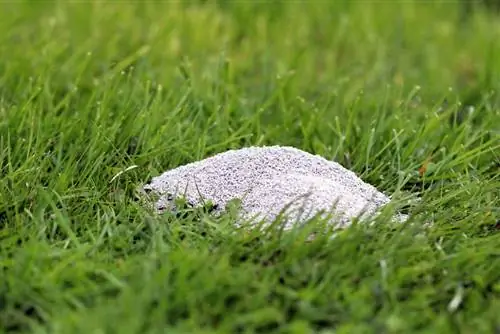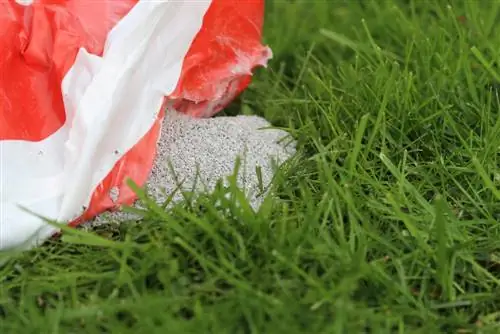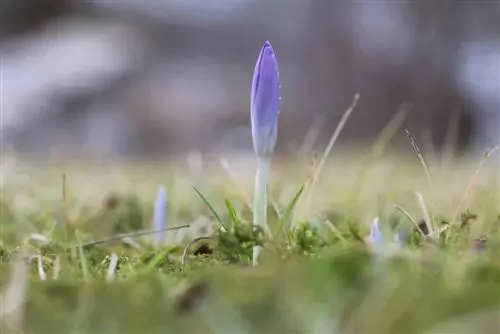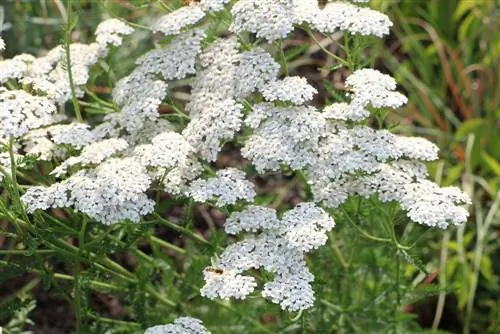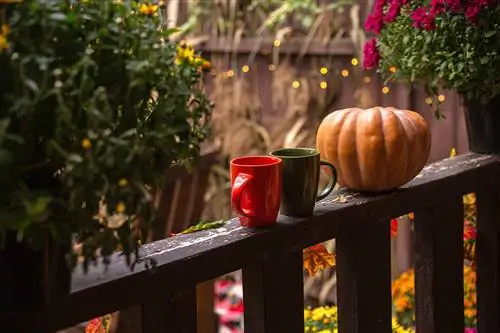- Author admin [email protected].
- Public 2023-12-17 03:39.
- Last modified 2025-06-01 06:48.
On the other hand, this time of year is no longer blessed with too many flowers and plants that bloom beautifully, maybe that's why they are registered that way.
Aster varieties
The aster from the daisy family can be found in the home garden. These varieties are often represented:
- Cushion asters (Aster dumosus)
- Smooth-leaf aster (Aster novi-belgii)
- Roughleaf Aster (Aster novae-angliae)
The name of the aster probably comes from the derivation of astrum, which means something like “star”. The radial arrangement of the flowers allows this assumption.
Tip:
For plants, make sure that there are annual and perennial asters.
Depending on the variety, there are also asters that bloom in early summer and those that then impress with colorful flowers in the following season. The garden can be colorfully planted almost all year round with different types of asters. The autumn asters in our gardens can be grown early as seeds or sown as biennial plants. The small asters that are available for balcony boxes and flower pots only last until they have faded.
Autumn is high season for asters
Tip:
Asters are popular destinations for bees and wasps in autumn.
Asters bloom in many colors from early September to November. Even though there are many different varieties and colors available, asters all have the same requirements for their location:
- fresh and nutrient-rich soil
- sunny location
- even soil moisture
- depending on the height they should be supported
- water evenly before flowering starts
Some of them have to be tied because of their height, others are lower and therefore more stable. Since most of the flowering plants have already withered at this time of year, asters represent a very special focal point in the garden. They are available in a wide variety of colors as well as the size of the flowers. Most people also consider chrysanthemums to be asters. The right partners in the flower bed are, for example, ornamental sage, catnip or pennisetum. Grasses can become beautiful companions of autumn thanks to the appearance of asters.
Sowing autumn asters
When the first seed packets are laid out in stores in spring, the gardener should decide on the preferred variety early on. If you would like to see a colorful carpet of flowers in your garden all year round, you can place the respective varieties with their different flowering times so that there is a perpetual circle of colors. The seeds for the asters can be planted straight away in the flower bed for perennial varieties. If you want, you can of course also prefer to use the potty. But you need enough space for this, because a bag of seeds grows into many small plants. They initially need a warm and protected place. Since they are sown in spring, it could perhaps be very cold again.
If the plants are in the garden, they can grow and thrive well in the right location. To do this, the soil must be kept well moist and it should also be rich in nutrients. If autumn is chosen for planting, it should be done so early that the young plants still have enough time to form roots.
Cutting autumn asters
Asters are a colorful splash of color in the garden, but you can also place them beautifully in a matching vase, place them in a mixed bouquet or put them in arrangements. Certainly the gardener cannot always resist when he sees the beautiful flowers. But cutting always promotes new growth and so cutting can ensure a new beginning. If asters are not cut, they will have long stems and few flowers. Pruning also ensures that the plant branches out and therefore produces more flowers. If it no longer sprouts after flowering, it should be cut back at ground level.
Dividing autumn asters
Perennial plants can become too large over time and then no longer produce sufficiently beautiful flowers in the middle. The low-growing autumn aster, also known as a cushion aster, is particularly affected by this. It should be dug up in the spring, divided and replanted in other places. This is good for the plant and provides a new growth spurt.
Tip:
Give your neighbor a cutting by division.
Overwintering the asters
There are many tips and just as many experience reports when it comes to overwintering asters. Maybe everyone has a different experience based on their location. Basically, you can protect asters from the cold by not cutting them. Young plants in particular can be protected in this way, and the root area can also be protected with compost or soil. An alternative to overwintering would be to cut it back and then cover it with pine branches or a thick layer of leaves. By the way, early snow is more of a blessing than a harm for the plants in the garden. Snow warms in a certain way, whereas an icy cold wind not only freezes the plant parts, but also causes them to dry out.
What you should know about autumn asters in brief
When the days gradually become shorter again and the summer flowers slowly lose their bloom, the autumn asters blossom festival begins in our gardens. Because of their late splendor, they are the most popular of all types of asters, as they add colorful accents around the house. They are also gratefully accepted by bees and butterflies as they are usually the only source of food at this time of year. With their bright flower stars they want to make us forget that the gardening year is soon coming to an end. The autumn aster: the farewell to summer! - But asters can also delight us all year round:
- Spring asters welcome the gardening year from May. Summer asters are ideal bedding plants and bloom throughout the summer from July onwards. The popular autumn aster closes the ranks and blooms until October.
- Most asters love the sun and nutritious, loose garden soil and are basically uncomplicated plants - but unfortunately susceptible to aster wilt.
- If you leave the leaves hanging on a hot day, he althy flowers will recover very quickly after watering.
- However, if they remain so poor, they may be affected by this fungal disease. The flowers are dying - a change of location must be considered!
Asters leave nothing to be desired, because hardly any other flower appears in such a diverse guise as them. Sometimes they slip into the dress of daisies, sometimes into those of chrysanthemums, daisies or dahlias. They amaze us with their copies and delight us with their almost endless variety of colors, exuberant abundance of flowers and extraordinary variety of species. Because within this large aster family there are numerous different shapes: from perennial dwarf cushions for the rock garden to two-meter-tall magnificent specimens, they offer limitless uses.
- As perennials, they add color to the beds, frame borders as flower cushions,
- As annuals, they decorate bowls, pots and boxes, put colorful blobs in the garden and fill any gaps.
- As an eye-catcher, planted directly on the garden fence, you can even achieve a little “cottage garden character” with them.
In addition to being divided into dwarf and tall genera, asters are also differentiated between smooth-leaf and rough-leaf asters due to their different leaf properties. Unfortunately, as perennials, they easily become bald from below. To mitigate this, you have to pamper it with plenty of compost in the spring, possibly divide and clear the perennial with a spade, and cut it back heavily after flowering. But they make up for this small weakness wonderfully with another plus point: They are ideal as cut flowers and last easily in the vase for 10 to 14 days.


